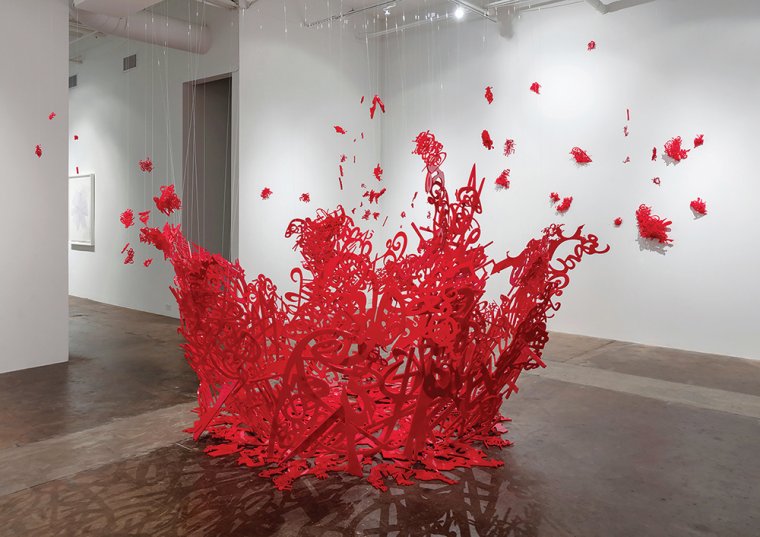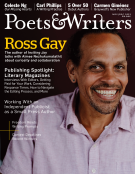Writers tend to think of language in two dimensions, a phenomenon embodied on the printed page or digitized on electronic screens. But for Dallas artist Simeen Farhat, language is a three-dimensional form. For more than a decade she has crafted text-inspired sculptures in a complex process that blends literary and figurative composition. Each piece is conceptually and structurally based on an evocative phrase, which Farhat may have devised herself or appropriated from sources such as Homer’s Iliad, the poetry of the thirteenth-century Persian mystic Rumi, and social media. Farhat renders her chosen phrase in freehand drawings, typically using them to create molds that she casts in resin. Letters are then forged in multiple sizes and colors, which she fashions into an abstract design that is in conversation with the meaning of the phrase that prompted it.

Blood Shot Is Blood Loved (2017), a text-inspired sculpture by Dallas artist Simeen Farhart. (Credit: Chris Worley Fine Arts, Kevin Todora)
For example, Blood Shot Is Blood Loved (2017), pictured above, evokes a massive drop of blood exploding as it hits the floor. Built from the words of a prose poem Farhat wrote, which the sculpture is titled after, the laser-cut acrylic piece “is about life and death, love and war,” she says. “My work is very feminist, political. It’s also about hybridity. I live in many cultures.” Born in Karachi, Pakistan, Farhat moved to the United States in 1992, earning her BFA from Arizona State University in Tempe in 1998 and an MFA from Texas Christian University in Fort Worth in 2000. From the beginning, her art—including drawings and multimedia pieces—has interrogated symbology and modes of communication. Her recent sculptures resemble word clouds, with letters so densely clustered as to render them illegible, “suggesting the complex contradictions found in everyday life,” according to the Grace Museum in Abilene, Texas, which exhibited Farhat’s work this year. Farhat’s sculptures also remind viewers of language’s physicality, its emergence from the gesture of shaping individual letters or the gesticulations of impassioned speech. Drawing on the alphabets of Arabic, English, and Romance languages, Farhat’s work also speaks to cross-cultural communication and what gets lost in translation. “I’m very much into wordplay,” she says.









